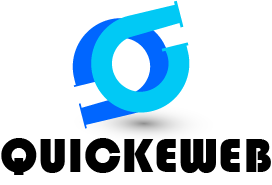
Productivity for us is just like software development, really.
In today’s distraction-filled world, productivity isn’t about working harder, it’s about working smarter. The most successful professionals don’t rely on willpower. They design systems and routines that maximize their focus, efficiency, and energy.
If you’ve ever felt like:
✔ Your to-do list only gets longer
✔ You’re busy all day but nothing gets done
✔ Distractions (emails, social media, meetings) derail your progress
…then this guide is for you.
We’ll break down the similar strategies that create a highly productive software development team AS WELL AS a productive daily workflow—whether you’re remote, hybrid, or in-office.

The Foundations of a Productive Workflow
1. Know Yourself (Work with Your Body)
Not all hours are created equal. Are you an early bird? A night owl? If you know you’re most productive at night, don’t plan to do a 7:30 a.m. meeting. This is why some teams do Code Review early vs some do it late – they adjust to their team’s level of alertness.
- Lions (Morning Types): Most focused 5 AM – 12 PM
- Bears (Mid-Day Types): Best energy 9 AM – 4 PM
- Wolves (Night Owls): Peak creativity after 12 PM
How-To: Track your energy for 3 days. When are you most alert? Schedule deep work during peak hours and admin tasks (emails, calls) during slumps. There are even softwares that will do this for you now!
2. Prioritize Ruthlessly
Productivity isn’t about doing more—it’s about doing what matters. As a former Product Management leader, I was paid a lot of money to tell a lot of people what to do and why it was important we do those things. Priority comes down to 2 methodologies in the end.
MOSCOW: Must / Should / Could / Would you have done?
Project Triangle: Cost / Quality / Time of what you do.
Each morning, identify:
- What must get done today? (Urgent)
- What may affect you financially if you do not do it? (Still valuable, but less urgent)
- 3+ Small Tasks (Quick wins that take little time but get things off your to-do list)
Pro Tip: This can all get derailed by an intruding issue, but if you take 10-15 minutes in the morning to do this, it sets your whole day up for success.
Optimizing Your Daily Structure
3. Time Blocking (Productivity Hack or DnD Sign?)
Instead of reacting to the day, can you design it? A little of both, I think.
I disagree with the idea that every minute of your day should be blocked and scheduled. I know very many successful people who work this way – kudos to them. Unfortunately, I would get derailed by an issue or meeting or just five minutes, please, and then feel guilty that my schedule was behind.
Time blocking can, however, help you set aside time to focus on things. I would set aside Friday afternoons to plan my next week, Wednesday lunches with my team to discuss issues we were seeing in current projects, and 2 hours every other week as “office hours” for drop-in support questions. This is not a “one size fits all” solution.
- Deep Work Blocks (90-120 min): No interruptions, deep thought.
- Shallow Work Blocks (30-60 min): Emails, meetings, admin.
- Buffer Time (15-30 min): Breaks, transitions, unexpected tasks.
Example Schedule for a Knowledge Worker:
- 8:00-10:00 AM: Deep Work (Project A)
- 10:00-10:15 AM: Break (Walk, stretch)
- 10:15-11:00 AM: Emails & Messages
- 11:00-12:30 PM: Deep Work (Project B)
- 12:30-1:30 PM: Lunch (No screens! – LOL)
- 1:30-2:30 PM: Meetings
- 2:30-3:00 PM: Quick Tasks
- 3:00-4:30 PM: Deep Work (Project A)
4. The 2-Minute Rule (Stop Putting It Off!)
If a task takes less than 2 minutes, do it NOW.
Examples:
- Replying to an email.
- Filing a document.
- Approving a request.
This prevents small tasks from piling up and draining you mentally.
Tools & Tech for Peak Productivity
5. Must-Have Apps for 2025
- Task Management: Todoist, ClickUp, or Trello
- Automation: Zapier (connects apps)
- Note-Taking: Notion (all-in-one workspace)
6. The Inbox-Zero Method (Tame Email Chaos)
- Process, Don’t Check: Schedule 2-3 email sessions per day (not constant!).
- The 4 D’s:
- Delete (Spam, irrelevant)
- Delegate (Forward if someone else should handle)
- Do (If <2 min)
- Defer (Schedule for later)
Avoiding Burnout
7. Sprints
Research shows we max out at 90-120 minutes of intense focus before needing a break. I highly recommend not going past 90 minutes as comprehension and retention decreases.
Work Like an Athlete:
- Focus Sprint: 90 min of deep work
- Recovery Break: 15-30 min (Walk, hydrate, meditate)
8. The Power of Cooldown
A chaotic end to the workday leads to stress and next-day procrastination. Instead, cooldown like you’ve just left the best Barry’s class you’ve ever attended!
5-Minute Shutdown Routine:
- Review completed tasks.
- Update tomorrow’s to-do list.
- Clear your workspace (physical & digital).
- Write down lingering thoughts so they don’t stay in your headspace all night.
- Use an app like Calm or Headspace to clear your mind during this time.
Advanced Tactics
9. Batching & Theming Days
- Batching: Group similar tasks (e.g., all calls on Tuesdays).
- Theming: Assign days to big categories (e.g., No-Meeting Monday).

10. The 80/20 Rule (Focus on the 20% That Drives 80% of Results)
Identify:
- Which tasks lead to the best results?
- Which tasks feel productive but aren’t?
- Which tasks should you delegate?
Also, we’re in the age of AI. Are there small tasks you can automate away?
Final Thoughts: Productivity Is a Skill
Practice it to get better—it’s all about continuous improvement. Test these strategies, track what works, and refine over time.
Your Next Steps:
- Pick 1-2 tactics to implement this week.
- Measure results (Did you finish more? Feel less stressed?).
- Optimize & repeat.
